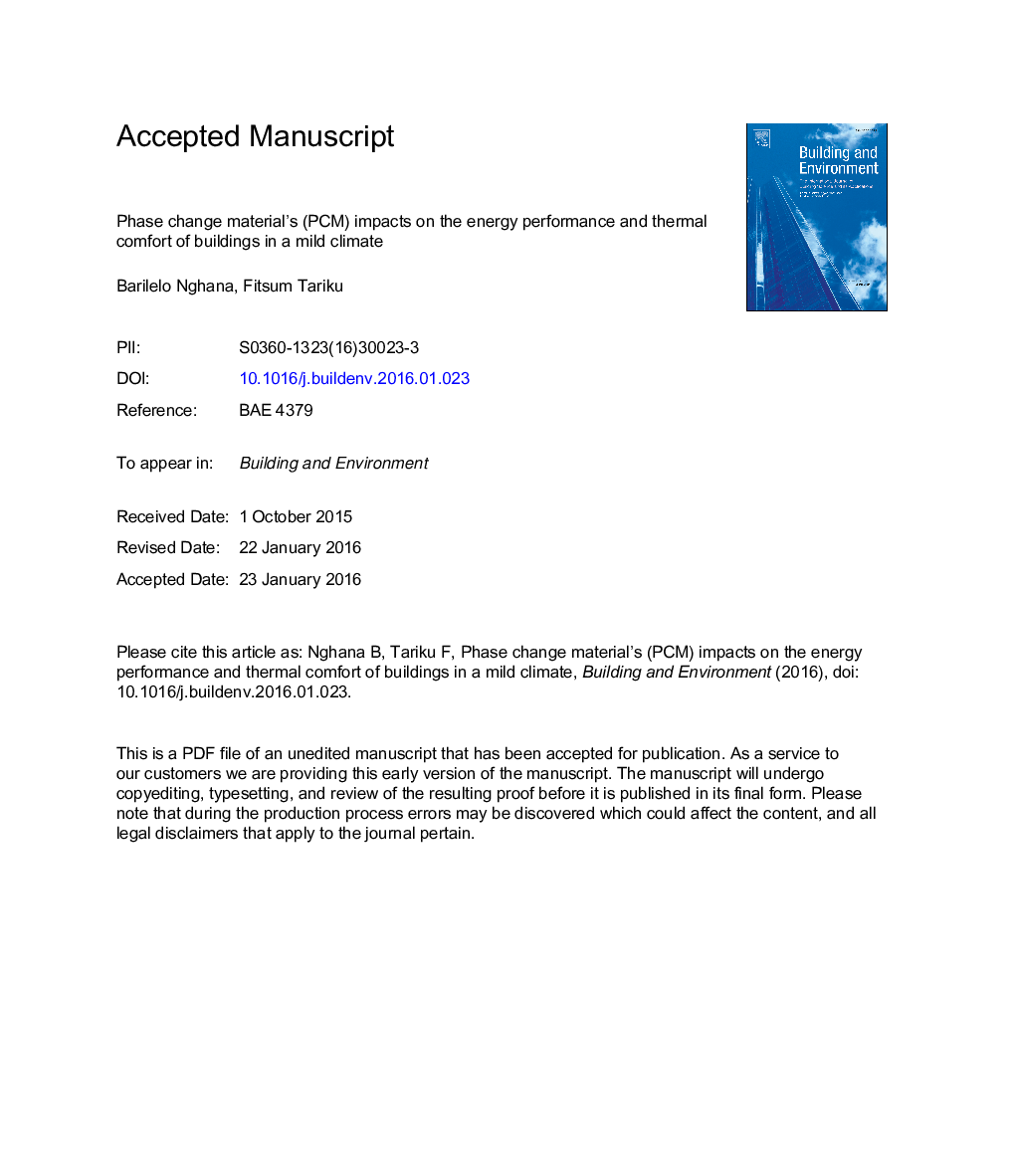| کد مقاله | کد نشریه | سال انتشار | مقاله انگلیسی | نسخه تمام متن |
|---|---|---|---|---|
| 6699530 | 502524 | 2016 | 56 صفحه PDF | دانلود رایگان |
عنوان انگلیسی مقاله ISI
Phase change material's (PCM) impacts on the energy performance and thermal comfort of buildings in a mild climate
دانلود مقاله + سفارش ترجمه
دانلود مقاله ISI انگلیسی
رایگان برای ایرانیان
کلمات کلیدی
موضوعات مرتبط
مهندسی و علوم پایه
مهندسی انرژی
انرژی های تجدید پذیر، توسعه پایدار و محیط زیست
پیش نمایش صفحه اول مقاله

چکیده انگلیسی
The current residential buildings are of light weight construction. As such, they tend to frequent indoor air temperatures fluctuations and have been proven detrimental for thermal comfort and mechanical system energy consumption. This is reflected in the energy consumption statistics for residential buildings. More than 62% of the building energy use is towards maintaining comfortable indoor conditions. Phase change materials (PCM); a latent heat thermal storage material, have the potential to increase the thermal mass of these buildings without drastically affecting the current construction techniques. In this paper, the potential of phase change materials is investigated through numerical and experimental studies. The field experimental study is conducted using twin side-by-side buildings exposed to the same interior and exterior boundary conditions, and EnergyPlus, after being benchmarked with the experimental results, is used for the numerical study. The numerical study is carried out for an existing residential apartment unit with particular emphasis on the effects of different design parameters such as orientation and window to wall ratio. Preliminary analyses of experimental data show that phase change materials are effective in stabilizing the indoor air by reversing the heat flow direction. In fact, the indoor air and wall temperature fluctuations are reduced by 1.4 °C and 2.7 °C respectively. Following, benchmarking of the numerical simulation shows confidence levels in predicting the interior conditions since discrepancies between experimental data and numerical data are within tolerance limits of the measuring device. Further, from the analysis of the numerical data, phase change material is effective in moderating the operative temperature but does not translate to significant thermal comfort improvement when evaluated over a night time occupancy regime in the summer. On the contrary, PCM is effective in lowering the heating energy demand by up to 57% during the winter condition.
ناشر
Database: Elsevier - ScienceDirect (ساینس دایرکت)
Journal: Building and Environment - Volume 99, April 2016, Pages 221-238
Journal: Building and Environment - Volume 99, April 2016, Pages 221-238
نویسندگان
Barilelo Nghana, Fitsum Tariku,